file descriptor(以下简称fd)又叫文件描述符,他是一个抽象的指示符,用一个整数表示(非负整数)。它指向了由系统内核维护的一个file table中的某个条目(entry)。这个解释可能过于抽象,不过在正式详细介绍fd之前,有必要先了解用户程序和系统内核之间的工作过程。
注: 本文描述的所有场景仅限于类unix系统环境,在windows中这玩意叫file handle(臭名昭著的翻译: 句柄)。
User space & Kernel space
现代操作系统会把内存划分为2个区域,分别为Use space(用户空间) 和 Kernel space(内核空间)。用户的程序在User space执行,系统内核在Kernel space中执行。
用户的程序没有权限直接访问硬件资源,但系统内核可以。比如读写本地文件需要访问磁盘,创建socket需要网卡等。因此用户程序想要读写文件,必须要向内核发起读写请求,这个过程叫system call。
内核收到用户程序system call时,负责访问硬件,并把结果返回给程序。
FileInputStream fis = new FileInputStream("/tmp/test.txt");
byte[] buf = new byte[256];
fis.read(buf);
上面代码的流程如下图所示
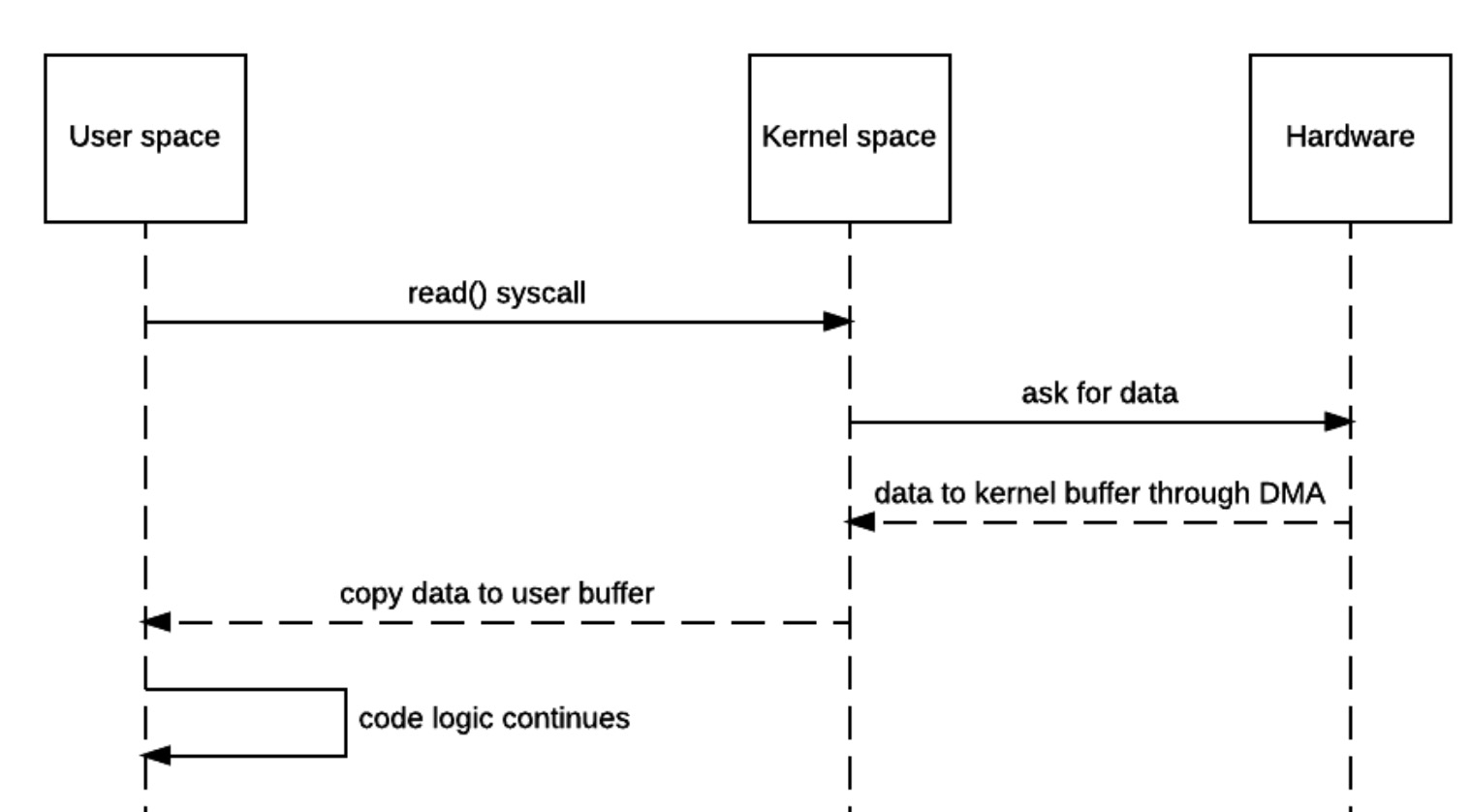
File Descriptor
上面简单介绍了User space和Kernel space,这对于理解fd有很大的帮助。fd会存在,就是因为用户程序无法直接访问硬件,因此当程序向内核发起system call打开一个文件时,在用户进程中必须有一个东西标识着打开的文件,这个东西就是fd。
file tables
和fd相关的一共有3张表,分别是file descriptor、file table、inode table,如下图所示。

-
file descriptors
file descriptors table由用户进程所有,每个进程都有一个这样的表,这里记录了进程打开的文件所代表的fd,fd的值映射到file table中的条目(entry)。
另外,每个进程都会预留3个默认的fd: stdin、stdout、stderr;它们的值分别是0、1,2。
Integer value Name symbolic constant file stream 0 Standard input STDIN_FILENO stdin 1 Standard output STDOUT_FILENO stdout 2 Standard error STDERR_FILENO stderr -
file table
file table是全局唯一的表,由系统内核维护。这个表记录了所有进程打开的文件的状态(是否可读、可写等状态),同时它也映射到inode table中的entry。
-
inode table
inode table同样是全局唯一的,它指向了真正的文件地址(磁盘中的位置),每个entry全局唯一。
流程
当程序向内核发起system call open(),内核将会
- 允许程序请求
- 创建一个entry插入到file table,并返回file descriptor
- 程序把fd插入到fds中。
当程序再次发起read()system call时,需要把相关的fd传给内核,内核定位到具体的文件(fd –> file table –> inode table)向磁盘发起读取请求,再把读取到的数据返回给程序处理。
下面是read这个函数的定义,第一个参数fd即file descriptor。
ssize_t read(int fd, void *buf, size_t count);
同样的,writesystem call函数如下
ssize_t write(int fd, const void *buf, size_t nbytes);
从上面的结果来看,fd就是file table的一个索引,指向了file table中的entry。
查看进程的file descriptors
linux
linux系统可以通过/proc/pid/fd文件夹查看进程的fd,比如我的redis进程id为96104,执行以下命令查看
ls -l /proc/96104/fd
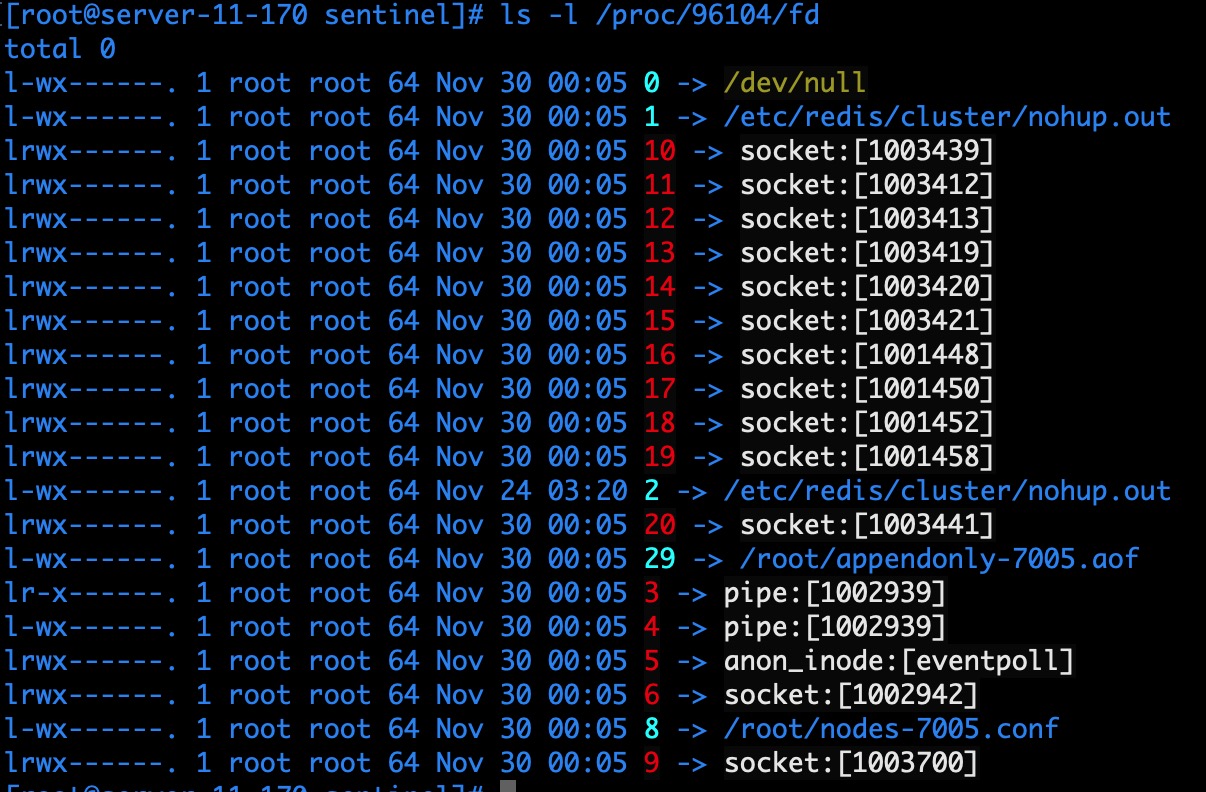
上图中的数字即fd。
mac os x
lsof -p pid
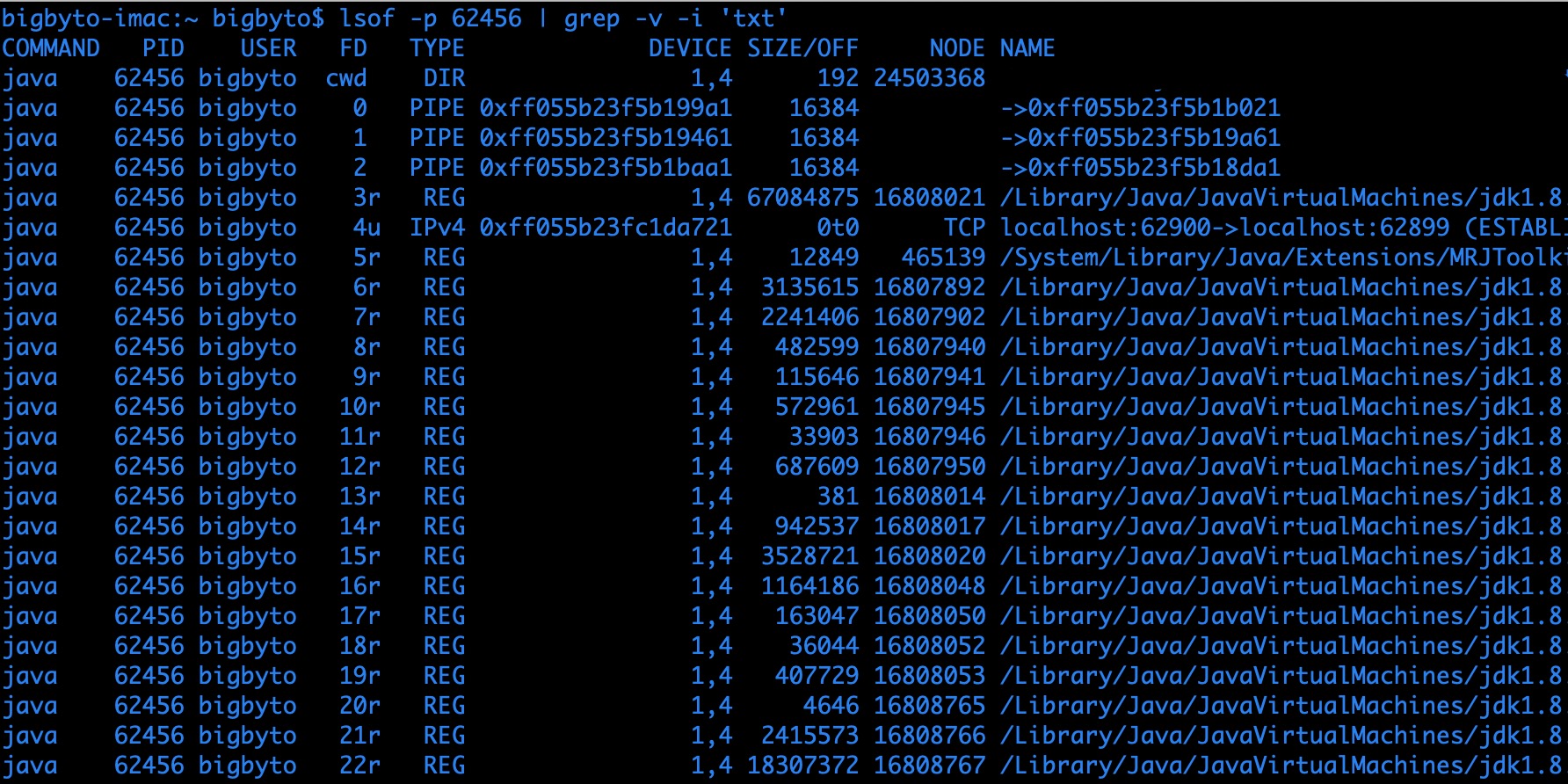
操作file descriptors
下面是一些系统函数。当程序发起system call,大多需要传递fd到这些函数中,kernel去访问具体的资源。
- open()
- read()
- write()
- select()
- poll()
更多系统函数可以参考维基百科File Descriptor,整理了大量常见的函数
Java中的File Descriptor
Java封装了FileDescriptor类表示fd,FileInputStrem和FileOutputStream中都会持有这个类。
public final class FileDescriptor {
private int fd;
//.......
}
上面可以看到fd和之前描述的一致,是一个整数。
public class FileInputStream extends InputStream {
/* File Descriptor - handle to the open file */
private final FileDescriptor fd;
public FileInputStream(File file) throws FileNotFoundException {
String name = (file != null ? file.getPath() : null);
SecurityManager security = System.getSecurityManager();
if (security != null) {
security.checkRead(name);
}
if (name == null) {
throw new NullPointerException();
}
if (file.isInvalid()) {
throw new FileNotFoundException("Invalid file path");
}
fd = new FileDescriptor();
fd.attach(this);
path = name;
open(name);
}
//......
}
fd在输入输出流的构造器中创建,JVM会发起system call open()初始化资源并返回fd。
stand stream fd
下面代码可以查看标准输入/输出/错误流中的fd,用debug启动即可在面板中看到fd的值。
public class FDTester {
public static void main(String[] args) throws Exception{
BufferedInputStream in = (BufferedInputStream) System.in;
PrintStream out = System.out;
PrintStream err = System.err;
FileInputStream fis = new FileInputStream("/tmp/test.txt");
System.in.read();
}
}
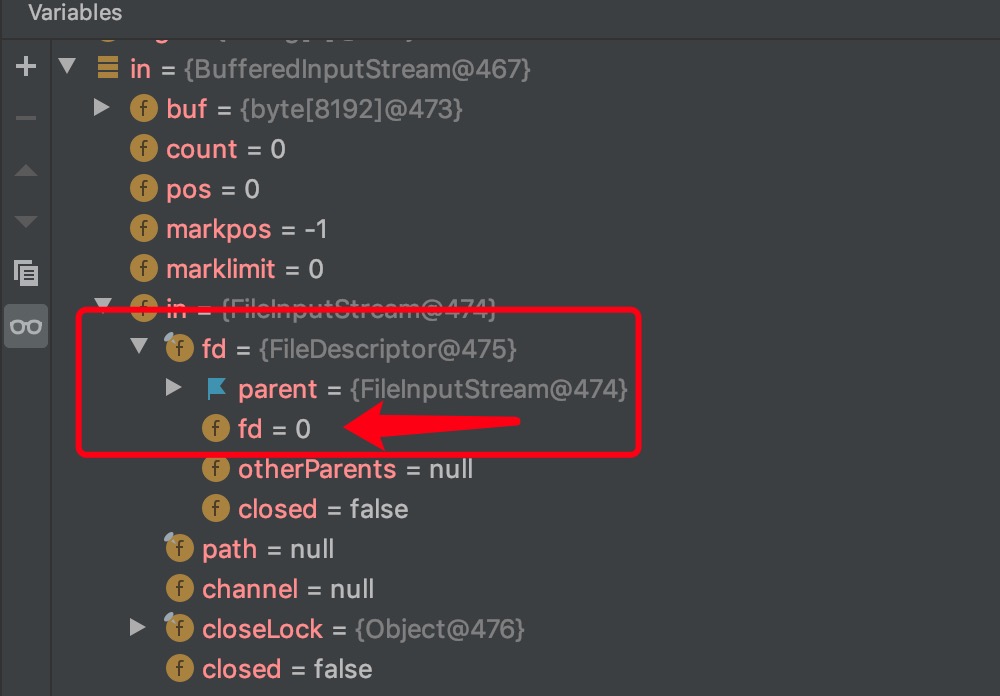
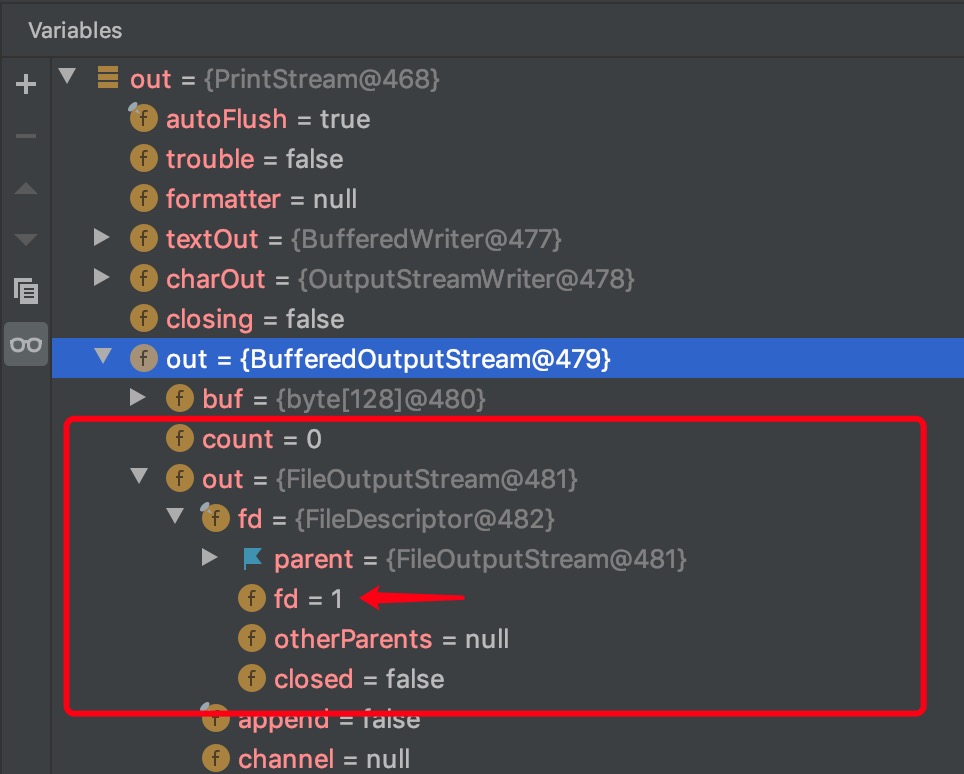
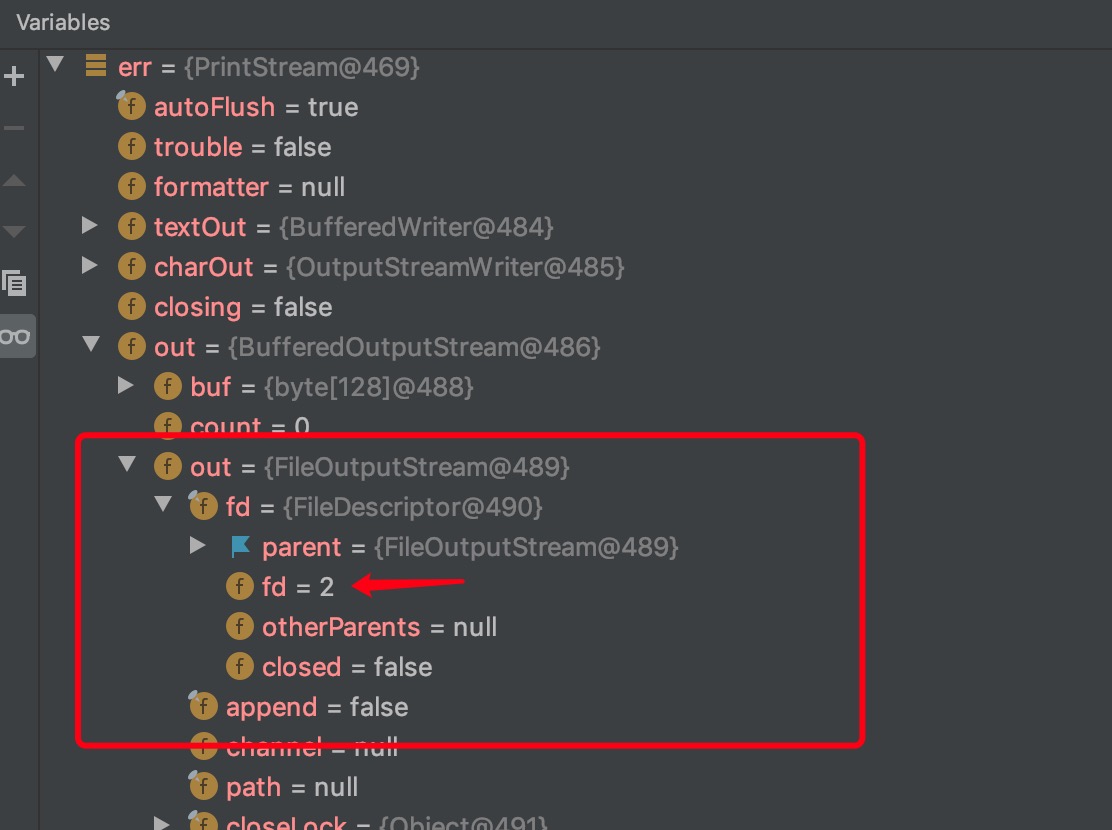
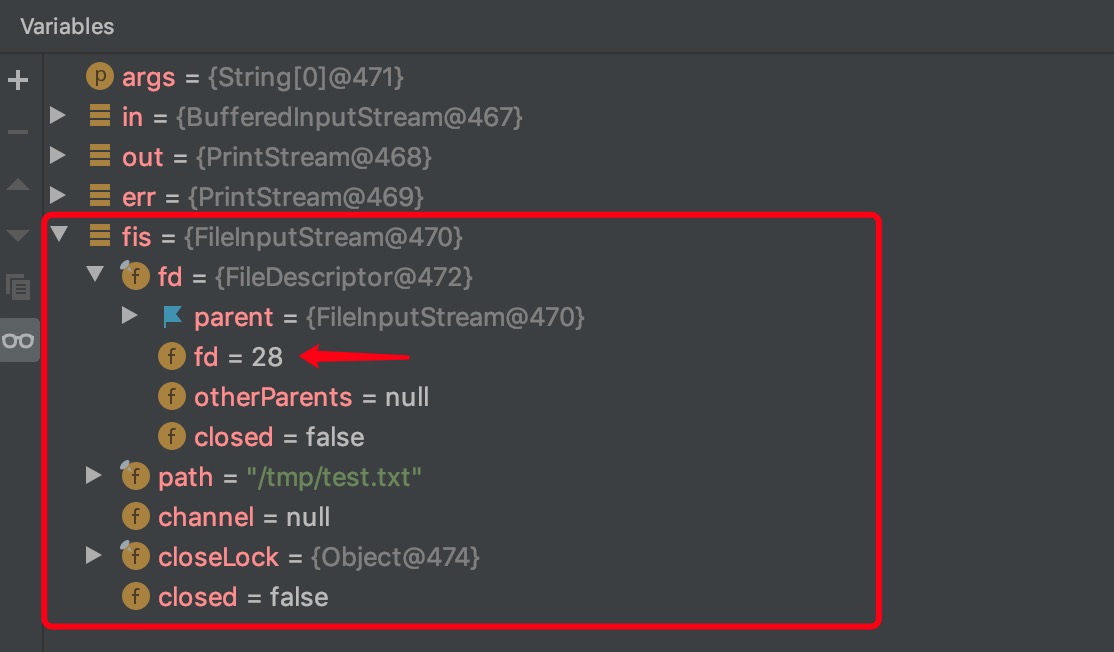
参考资料
https://en.wikipedia.org/wiki/File_descriptor
https://www.computerhope.com/jargon/f/file-descriptor.htm
https://en.wikipedia.org/wiki/Open_(system_call)
https://en.wikipedia.org/wiki/Read_(system_call)
https://en.wikipedia.org/wiki/Write_(system_call)